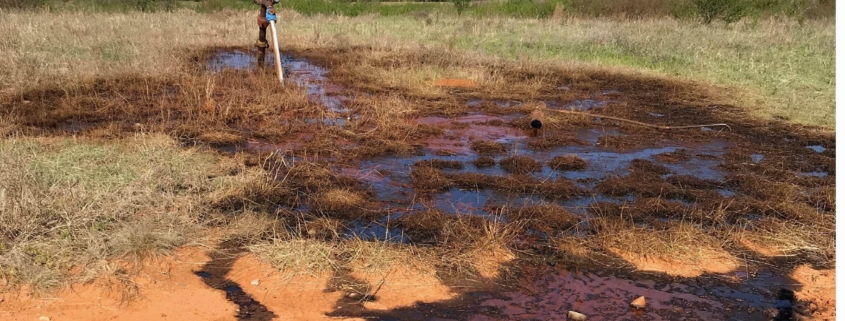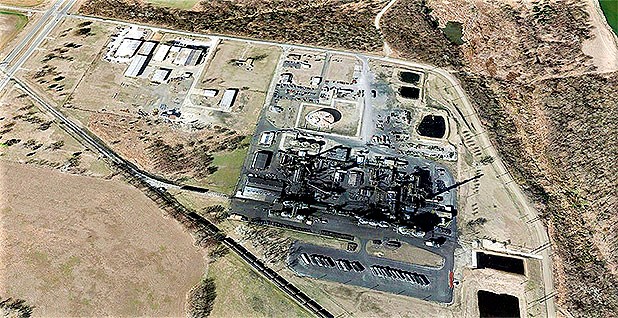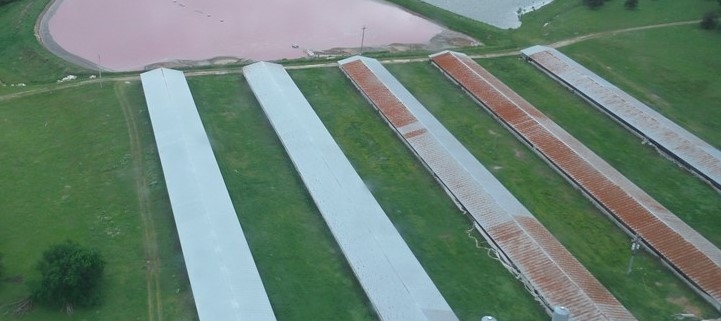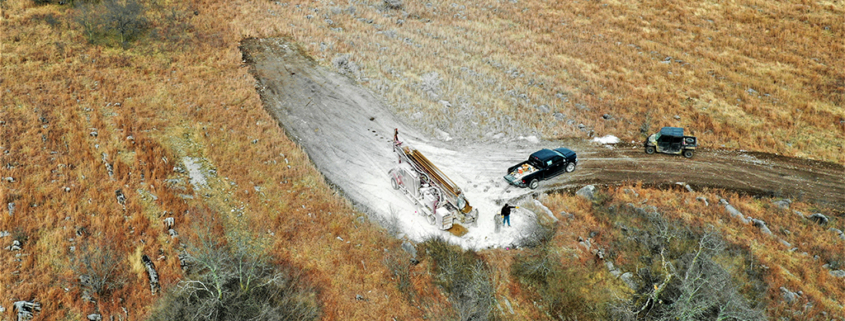Lithochimeia Presents 2011 Poster on Lake Tenkiller Sediment Contamination
KEY SCIENCE RELIED ON IN POULTRY LITIGATION
FEATURED IN Journal of Applied Microbiology
Roger Olsen (CDM), Bert Fisher and Fred Soster (DePauw University) presented a poster at the 6th International Conference on Remediation of Contaminated Sediments
demonstrating the use of principal components analysis and sediment geochronology to demonstrate the relationship between the chemistry of Lake Tenkiller sediments and the history of poultry waste disposal within the Illinois River Waterhshed.
Olsen, R. L., J. B. Fisher and F. M. Soster. 2011. Evaluations of the sources of contamination in sediment cores form Tenkiller Reservoir (Oklahoma, U.S.A.). 6th International Conference on Remediation of Contaminated Sediments, New Orleans, Feb 7-10, 2011.
(2011 Battelle POSTER 2011 Battelle ABSTRACT)
Final Program: http://www.battelle.org/conferences/sediments/pdfs/finalprogram.pdf).
Oil and Gas Contamination in Osage County, Oklahoma
In 2000, Osage County rancher and landowner, Don Quarles, brought suit against oil and
gas producers for historical and ongoing crude oil and saltwater pollution damage to his
land and groundwater.
Lithochimeia reviewed hundreds of well files, well logs, historic air photos, soil survey
data , geologic reports and water quality reports to establish evidence of historic releases
of oil and saltwater. In addition, Lithochimeia conducted extensive on-site inspections of
nearly one hundred well sites and, as appropriate, collected soil samples for salinity and
hydrocarbon analysis. Lithochimeia also executed numerous terrain conductivity surveys
to establish the spatial extent of salt pollution ad heavily contaminated sites. During the
course of this litigation, Lithochimeia prepared a series of expert reports and provided
deposition testimony and testimony at a jury trial in the United States District Court for
the Northern District of Oklahoma regarding the pollution injury, its causation and
monetary damage to Quarles’ land.
The jury entered a verdict for Quarles and awarded monetary damages.
Carbon Black Contamination in Ponca City, Oklahoma
In 2004 the Ponca Tribe of Indians filed suit against Continental Carbon Company, owned by the Koo family of Taiwan, for damages from carbon black emissions from its Ponca City-based factory.
Lithochimeia provided technical counsel to Plaintiff’s attorneys regarding existing sampling data and assisted plaintiffs in conducting sampling in an around the Continental Carbon Company site. Other tasks undertaken by Lithochimeia included establishing the precise latitude and longitude of hundreds of addresses in Ponca City, producing a large variety of custom maps and displays including maps of plume concentrations of particulates based on air quality modeling and preparing an expert report linking the production of carbon black at the Continental Carbon Company site to carbon black found on surfaces outside the boundaries of the Continental Carbon Company site. A second expert report was prepared in rebuttal to certain statistical and chemical assertions made by a one of the Defendant’s experts.
This matter is in active litigation and is scheduled for trial in November 2008.
Poultry Waste Contamination of Surface Water in Northeastern Oklahoma
A large and growing numbers of broiler chickens and other poultry are produced within northwestern Arkansas and northeastern Oklahoma. Historically, wastes produced by poultry have been land disposed by simple broadcast spreading near where such wastes are generated. Because of the industrial farming practices employed in the growing of poultry, these wastes contain very high levels of phosphorus, and application of these wastes to land adds phosphorous far in excess of the amount required to grow crops. Once applied to the land the phosphorous from the wastes can and does move from the soil to surface waters in runoff. Phosphorus is the element most likely to limit algae growth in lakes and reservoirs. The excessive growth of algae in lakes and reservoirs results in a number of problems including, the production of carcinogens when the water is disinfected prior to distribution, taste and odor problems from algal production of geosmin and 2-methyliosborneol, anoxia in bottom waters and aesthetics issues.
In 2001, the City of Tulsa filed suit against some of the largest poultry producers in the nation including Tyson, Simmons and Cargill in the Northern District of Oklahoma. The City alleged that the Defendants’ growers polluted Lakes Eucha and Spavinaw, from which Tulsa draws approximately half of its water supply, with 170 million pounds of phosphorous each year as the consequence of the land disposal of poultry wastes. In July 2003, The City of Tulsa and the Tulsa Metropolitan Utility Authority reached a court approved settlement in City of Tulsa v. Tyson, et al. with Tyson and other large poultry producers regarding nutrient management practices to be employed within the Spavinaw Creek Watershed. In their lawsuit the City of Tulsa and the Tulsa Metropolitan Utility Authority contended that land disposal of poultry waste within the Spavinaw Creek watershed had resulted in elevated levels of phosphorous in the water supply reservoir lakes, Lake Eucha and Lake Spavinaw, fed by Spavinaw Creek. The settlement agreement stated that future disposal of poultry waste within the Spavinaw Creek Watershed would be managed a Phosphorus Index that would be specifically developed for this watershed.
After the settlement agreement was executed, the Tulsa Metropolitan Utility Authority (TMUA) and the City of Tulsa retained Lithochimeia to provide technical counsel and expert witness services regarding phosphorous indices proposed by both TMUA and the Defendants. Lithochimeia has also provided ongoing technical counsel to TMUA and the City of Tulsa regarding reports prepared concerning water quality in Lakes Eucha and Spavinaw and in Spavinaw Creek and its tributaries. Most recently, Lithochimeia produced an expert report concerning the currently employed phosphorus index being used to manage poultry waste disposal within the Spavinaw Creek watershed. This expert report recommended a number of improvements to this phosphorus index.
In June 2005 the State of Oklahoma filed a lawsuit (State of Oklahoma v. Tysons Foods, Inc. et.al.) in the Northern District of Oklahoma against some of the nation’s largest producers of chickens, turkeys and eggs, including some out-of-state producers that alleged contamination of the Illinois River and Lake Tenkiller. The State of Oklahoma contended that land disposal of poultry waste within the Illinois River watershed had resulted in elevated levels of phosphorous, bacteria and other poultry waste constituents in the Illinois River and its tributary streams, and that such pollution was a threat to the environment and human health. The State’s complaint alleges violations of state and federal nuisance laws, trespass, as well as other violations of state environmental regulations. The State also seeks to recover the costs that it has had to incur, and will incur, to respond to the pollution under CERCLA.
The State of Oklahoma retained Lithochimeia at the beginning of the lawsuit to provide technical counsel, technical management, field sampling and expert witness services, including two depositions, testimony at a preliminary injunction hearing and just over six days of trial testimony. Lithochimeia developed information regarding poultry industry waste generation and disposal practices, fate and transport of nutrients and metals from poultry waste application fields to surface and ground water within the Illinois River Watershed and developed a model of the historical impact of poultry waste disposal on the Illinois River Watershed from geochemical and geochronological study of Lake Tenkiller sediments.
These matters are still in active litigation.
Disputed Groundwater Withdrawal Permit in South-Central Oklahoma
In November 2002, Meridian Aggregates Co., a wholly owned subsidiary of Martin Marietta Materials Inc., applied for a permit to withdraw groundwater from the Arbuckle-Simpson in south-central Oklahoma at a rate of 1,400 acre-feet/yr for dust suppression and crushed stone washing at the company’s aggregate mining operations in Johnston County, Oklahoma. A local grassroots organization, Citizens to Protect the Arbuckle-Simpson Aquifer (CPASA), which arose when local citizens acted in response to man-made threats to the Arbuckle Simpson aquifer and the springs and streams which flow from it, opposed this permit application.
Although Arbuckle-Simpson aquifer, a sole-source bedrock aquifer which lies beneath a surface area of about 500 square miles in south-central Oklahoma, contains a vast amount of high quality groundwater, its rate of recharge is low (less than one-acre foot/yr). Consequently, CPASA was and remains concerned that water withdrawal from the aquifer in excess of recharge could threaten municipal water supplies, more than 100 springs and streams whose flow depends solely on the flow of groundwater. Loss of the groundwater resource for these uses would adversely impact numerous commercial, recreational, municipal and federal facilities rely on the waterways fed by spring flows of the Arbuckle Simpson aquifer.
Lithochimeia worked on behalf of CPASA to review and analyze data as well as numerous technical studies regarding the hydrogeology and geology of the Arbuckle-Simpson aquifer. Lithochimeia developed a geological interpretation regarding the hydro-geologic behavior of that portion of the Arbuckle-Simpson aquifer that would be impacted by Meridian Aggregates’ proposed groundwater well and quarrying operation that indicated potential for adverse impact to local springs at the proposed groundwater withdrawal rate. Lithochimeia’s work included a geologic inspection of the quarry under development and the area surrounding the quarry. Lithochimeia provided an written expert opinion, deposition testimony and live testimony at an Oklahoma Water Resources Board (OWRB) administrative law hearing.
In mid-2006, and after a lengthy administrative law process, the OWRB granted Meridian a permit to withdraw 274 acre-feet/yr, or approximately 20% of the 1,400 acre-ft/year in Meridian Aggregates’ original permit application.
NPDES Permit Dispute near Hot Springs, Arkansas
In March 2006, an individual citizen filed a request for review with the Arkansas Pollution Control and Ecology Commission of a National Pollutant Discharge Elimination System (NPDES) Permit issued to Umetco Minerals Corporation for wastewater discharge from the Wilson Vanadium Mine. The Wilson Vanadium Mine is a 375-acre site located about 8 miles east of the city of Hot Springs, Arkansas in Garland County, Arkansas. The NPDES permit review was requested because the citizen believed that the permit would allow the discharge of wastewater that would create an environmental hazard, would allow the pollution of Wilson Creek and would adversely impact his property interest and his use and enjoyment area waters.
Lithochimeia worked on behalf of the individual citizen to review an extensive collection of documents obtained from UMETCO and from the Arkansas Pollution Control and Ecology Commission. These documents included technical reports, surface water, groundwater and soil sampling data, discharge monitoring reports, administrative correspondence and others. In addition, Lithochimeia undertook a limited field sampling effort focused on better defining the distribution and occurrence of contaminated soils on the site. After extensive file review and two site visits, Lithochimeia developed an opinion that the wastewater discharged from the Wilson Vanadium Mine was process wastewater that contained nickel, that the road right-of-way on the site was contaminated by metals and that non-permitted discharges were taking place from the mine site. Lithochimeia prepared an expert report and offered deposition testimony and testimony before an administrative hearing officer for the Arkansas Pollution Control and Ecology Commission.





